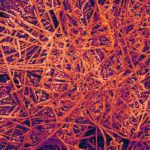Lien vers Pubmed [PMID] – 23071730
Lien DOI – 10.1371/journal.pone.0047123
PLoS One 2012 ; 7(10): e47123
Yersinia pestis causes an acute infection known as the plague. Conventional techniques to enumerate Y. pestis can be labor intensive and do not lend themselves to high throughput assays. In contrast, bioluminescent bioreporters produce light that can be detected using plate readers or optical imaging platforms to monitor bacterial populations as a function of luminescence. Here, we describe the development of two Y. pestis chromosomal-based luxCDABE bioreporters, Lux(PtolC) and Lux(PcysZK). These bioreporters use constitutive promoters to drive expression of luxCDABE that allow for sensitive detection of bacteria via bioluminescence in vitro. Importantly, both bioreporters demonstrate a direct correlation between bacterial numbers and bioluminescence, which allows for bioluminescence to be used to compare bacterial numbers. We demonstrate the use of these bioreporters to test antimicrobial inhibitors (Lux(PtolC)) and monitor intracellular survival (Lux(PtolC) and Lux(PcysZK)) in vitro. Furthermore, we show that Y. pestis infection of the mouse model can be monitored using whole animal optical imaging in real time. Using optical imaging, we observed Y. pestis dissemination and differentiated between virulence phenotypes in live animals via bioluminescence. Finally, we demonstrate that whole animal optical imaging can identify unexpected colonization patterns in mutant-infected animals.

